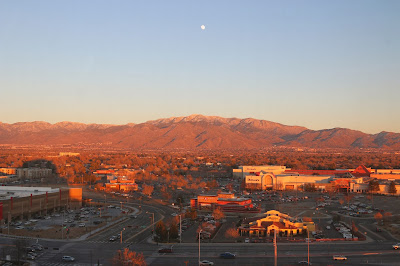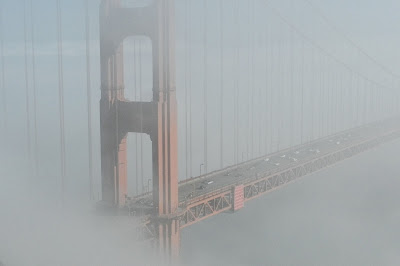(Warning: this post gets technical. You do need MATLAB knowledge to get the full understanding, but even if you don't know MATLAB, the process is still hopefully straightforward, even if the code isn't.)
I was sitting at the Burlington Mall the other day and I saw a beautiful scene with some deep red trees and a sky with some matching red in it. So of course, I took out my camera and this is what I got:
(ISO 6400, f/5, 1/60 sec.)
Umm...that didn't work as it totally blew out the sky, probably due to using spot light metering, with the spot being on the tree. So instead, I tried spot metering on the sky, and this was the result:
(ISO 250, f/4, 1/40 sec.)
That's not too bad, but the red of the trees is darker than I'd like. In retrospect, that's what HDR is for, but that didn't hit me on the spot. So when I got home, it became my goal to bring out the red of the trees while keeping the sky at its current brightness. I started with the second image since the sky was just totally blown out in the first. Here we go:
Step 1: Crop and Rotate
The image is obviously slanted and I really don't care about the cars or the empty tree on the right. While the Image Processing Toolbox in MATLAB has some functions that can crop and rotate an image, Canon's Digital Photo Professional has a nice simple GUI to do both those actions, so I went there, and here was the result:
Step 2: Convert to gray
How do I separate the trees out? What makes them different from the sky? It's how bright they are (or aren't). To segment (which is a fancy word for separate into different parts) an image based on intensity values, it's often easiest to convert to grayscale, and now the MATLAB and Image Processing Toolbox part begins:
>> I = imread('redLeaves.jpg');
>> Igray = rgb2gray(I);
>> imshow(Igray)
Step 3: Determine the threshold value
Once an image is in grayscale in MATLAB, the pixel values go from 0 to 255 (0 is black, 255 is white) and the goal is to figure out the "threshold" value T, i.e. the value where the pixels whose values are less than T are trees and the pixels whose values are greater than T are the sky. To do this, I looked at the image histogram:
>> imhist(Igray)
Long story short, the peaks are values that appear more times in the pixels of the grayscale image. In the grayscale image, there's a pretty clear delineation between the the dark and the bright, and the two peaks in the image histogram seem to confirm this. So a good threshold value may be 50 as that's a bit beyond where the first peak ends. How good is that value? Well, let's convert this image to black and white to see which parts are greater than 50 and which parts aren't. I want the trees to show up as white in this image for simplicity, so:
>> Ibw = Igray<50; % less than so that the trees are white and the sky is black
>> imshow(Ibw)
A lot of stuff is showing up as "tree" here, so let's try different values of the threshold:
>> T = 50:-5:10;
>> for ix=1:9
Ibw = Igray<T(ix);
subplot(3,3,ix)
subimage(Ibw)
title(['Threshold = ' num2str(T(ix))])
end
It's harder to see at this smaller size, but on a larger monitor, the tree starts to disappear even at a threshold value of 45, so we'll stick with 50.
Step 4: Find the pixels that are below the threshold
Now that we've decided a threshold value, we need to find the locations of the pixels that are below the threshold value. We could write a for loop but we don't need to. Instead, just a simple find command:
>> [r,c] = find(Igray<50);
The result will be a vector of rows and another vector of columns; their combinations are the pixels less than 50. For example, r(1) = 367 and c(1) = 1, which means the 367th row and 1st column is a pixel whose value is less than 50.
Step 5: Brighten it!
Well, now that we know the locations of the pixels to brighten, let's brighten them! I'll use a simple algorithm which multiplies the intensity of each pixel by 2. Of course, we need to do this across the R, G, and B value of each pixel. For example, to do this at the 367th row and 1st column, you would use this command:
>> I(367,1,:) = I(367,1,:) * 2;
Except of course we need to do this across all the pixels found in step 4, so for that, we will use a for loop:
>> Ibright = I; % Just so we're working on a backup copy
>> for ix=1:length(r) % Or length(c)
Ibright(r(ix),c(ix),:) = I(r(ix),c(ix),:) * 2;
end
>> imshow(Ibright)
Not bad! Let's look at three images now: the original, the image with the dark areas brightened by a factor of 2, and the image with the dark areas brightened by a factor of 3:
And there you go. With the brightening factor of three, it almost starts to look cartoonish, and the lamp posts get all yucky too.
Next steps
It was 12:30 AM when I finished the above, so I went to sleep :). But the next thing I'd try to do is to get rid of the light posts using some kind of ROI (region of interest) processing (using the ROIFILL function?) and come up with a better brightening algorithm besides a simple multiply by a constant. Any suggestions? What would you do here?





















